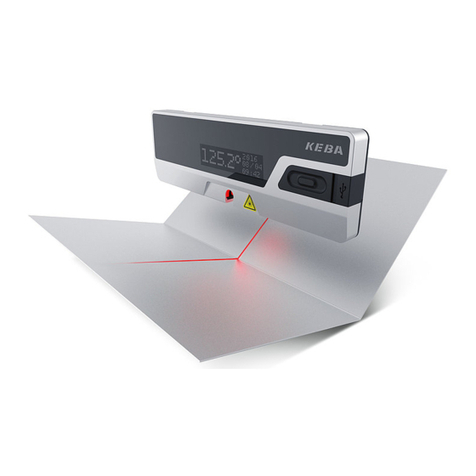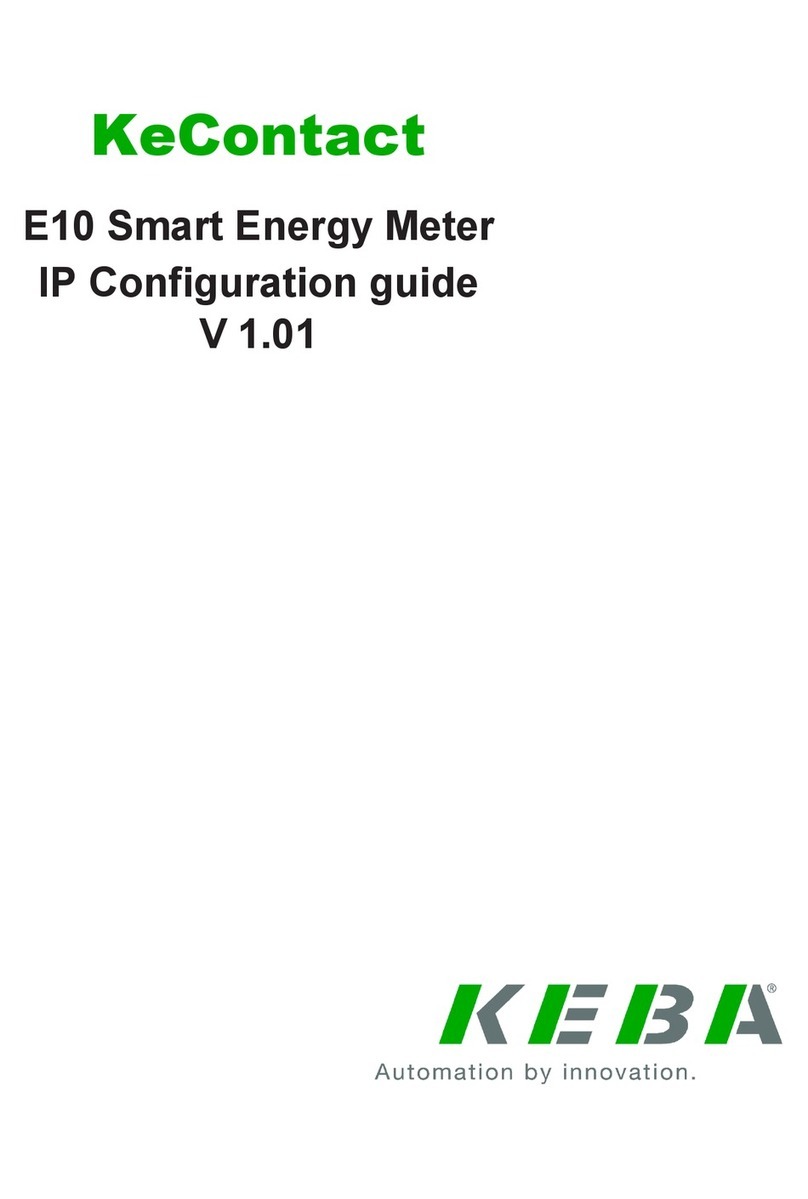
E10 Table of contents
V1.00 3
© KEBA 2023
Table of contents
1 Introduction................................................................................................................ 5
1.1 Representation of safety instructions............................................................... 5
1.2 Purpose of the document................................................................................. 6
1.3 Requirements................................................................................................... 6
1.4 Intended use .................................................................................................... 6
1.5 Information on this document........................................................................... 7
1.6 Additional documentation................................................................................. 7
2 Safety notes ............................................................................................................... 8
3 Scope of delivery....................................................................................................... 10
4 Description................................................................................................................. 11
4.1 Front view ........................................................................................................ 11
4.2 Top view........................................................................................................... 11
4.3 Bottom view ..................................................................................................... 12
4.4 Type plate ........................................................................................................ 12
5 Displays and operating elements ............................................................................ 13
5.1 LED displays .................................................................................................... 13
5.2 Reset button..................................................................................................... 14
6 Mounting and installation instructions ................................................................... 15
6.1 Space requirement........................................................................................... 15
6.2 Mounting the device......................................................................................... 15
7 Connections and wiring............................................................................................ 16
7.1 Connection overview........................................................................................ 16
7.2 Connecting split-core current transformers...................................................... 17
7.3 Connecting the voltage supply......................................................................... 18
7.4 Ethernet interface............................................................................................. 18
8 Operating behavior.................................................................................................... 20
8.1 Restarting the device ....................................................................................... 20
8.2 Resetting the device to factory settings ........................................................... 20
8.3 Behavior in the event of voltage drop .............................................................. 20
9 Configuration ............................................................................................................. 21
9.1 Measuring interval (register 256) ..................................................................... 21
9.2 Split-core current transformer (register 257).................................................... 21
9.3 Network configuration (registers 259 - 267)..................................................... 21
































